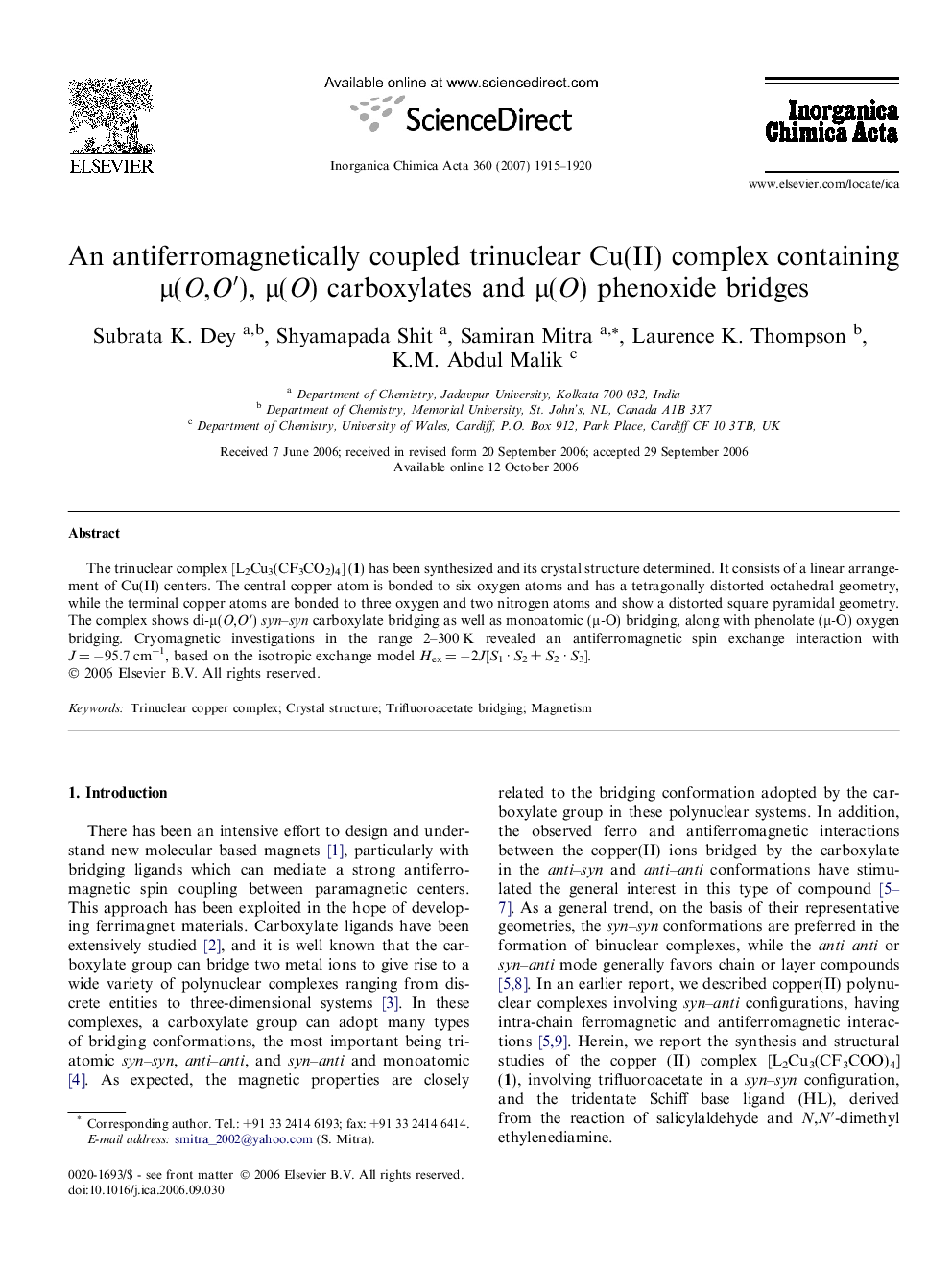| Article ID | Journal | Published Year | Pages | File Type |
|---|---|---|---|---|
| 1310450 | Inorganica Chimica Acta | 2007 | 6 Pages |
The trinuclear complex [L2Cu3(CF3CO2)4] (1) has been synthesized and its crystal structure determined. It consists of a linear arrangement of Cu(II) centers. The central copper atom is bonded to six oxygen atoms and has a tetragonally distorted octahedral geometry, while the terminal copper atoms are bonded to three oxygen and two nitrogen atoms and show a distorted square pyramidal geometry. The complex shows di-μ(O,O′) syn–syn carboxylate bridging as well as monoatomic (μ-O) bridging, along with phenolate (μ-O) oxygen bridging. Cryomagnetic investigations in the range 2–300 K revealed an antiferromagnetic spin exchange interaction with J = −95.7 cm−1, based on the isotropic exchange model Hex = −2J[S1 · S2 + S2 · S3].
Graphical abstractThe trinuclear complex [L2Cu3(CF3COO)4] (1) has been synthesized and its crystal structure determined. The central copper atom is bonded to six oxygen atoms and has tetragonally distorted octahedral geometry, while the terminal copper atoms are bonded to three oxygen and two nitrogen atoms and show a distorted square pyramidal geometry. The complex shows di-μ-(O,O′) syn–syn carboxylate bridging as well as monoatomic (μ-O) bridging, along with phenolate (μ-O) oxygen bridging. Cryomagnetic investigations in the range 2–300 K revealed an antiferromagnetic spin exchange interaction with J = −95.7 cm−1.Figure optionsDownload full-size imageDownload as PowerPoint slide
